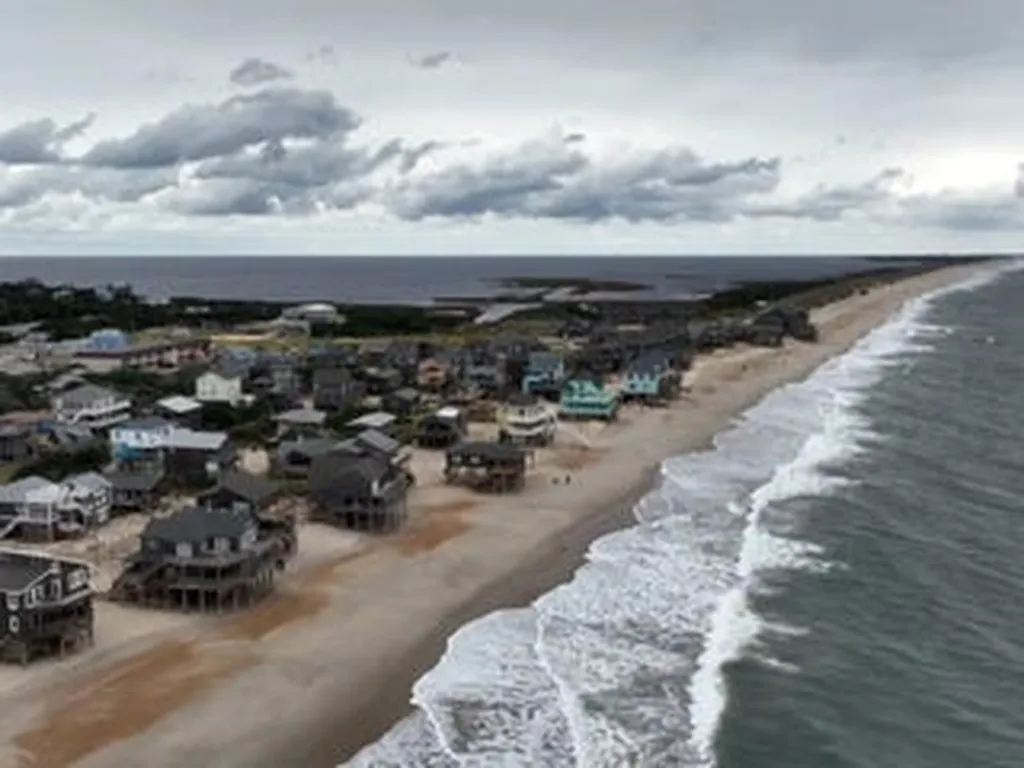The recent collapse of five unoccupied homes on North Carolina’s Outer Banks, following the erosion caused by hurricanes Humberto and Imelda, underscores the growing threat that climate change poses to coastal communities. This event, part of a trend that has seen 17 homes lost since 2020, highlights the vulnerability of low-lying barrier islands to rising sea levels and increasingly intense storms. The implications of these changes extend beyond residential areas, impacting the agriculture sector and investors in several significant ways.
The Outer Banks, like many coastal regions, are critical areas for agriculture, particularly for crops that thrive in the unique microclimates and soil conditions found there. The loss of land to erosion and the salinization of soil due to rising sea levels can severely disrupt agricultural productivity. Farmers may face reduced yields or be forced to abandon certain crops altogether, leading to economic losses and potential shifts in regional food production patterns. The uncertainty surrounding coastal land use can also deter investment in agricultural infrastructure, such as irrigation systems or greenhouses, which require long-term stability.
For investors, the increasing frequency and intensity of coastal storms and the associated risks of property damage and insurance costs present significant challenges. The agriculture sector, which often relies on substantial investments in land and equipment, is particularly vulnerable. Investors may become hesitant to fund agricultural projects in coastal areas due to the heightened risk of asset depletion and the rising costs of insuring these properties. This could lead to a reduction in agricultural investment in coastal regions, potentially shifting focus to more stable inland areas.
Moreover, the broader economic implications of climate change on insurance markets are already being felt. As home insurance prices rise and some insurers withdraw from vulnerable areas, the financial burden on homeowners and businesses increases. This trend could extend to agricultural insurance, making it more difficult and expensive for farmers to protect their investments. The agricultural sector, which is already grappling with the impacts of climate change on crop yields and livestock health, may face additional strain as insurance becomes less accessible and more costly.
The collapse of homes on the Outer Banks serves as a stark reminder of the urgent need for adaptive strategies in coastal management and agriculture. For the agriculture sector, this may involve investing in climate-resilient crops, implementing advanced soil conservation techniques, and exploring innovative farming practices that can withstand the changing climate. For investors, it underscores the importance of diversifying portfolios and considering the long-term risks associated with coastal investments.
As climate change continues to reshape our landscapes, the agriculture sector and investors must adapt to these evolving challenges. Proactive measures, such as investing in resilient infrastructure and supporting policies that promote sustainable land use, will be crucial in mitigating the impacts of climate change on coastal agriculture and ensuring the sector’s long-term viability.

